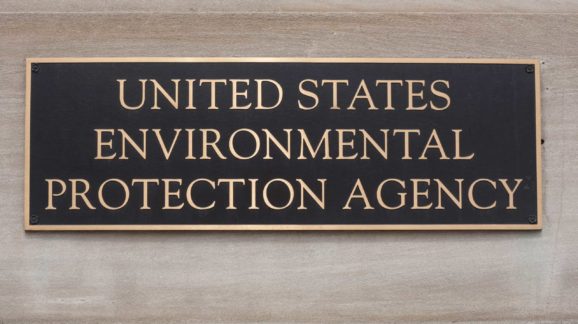Crop Protection Products on the Chopping Block under New EPA Leadership

Photo Credit: Getty
The Biden administration is poised to start reversing Trump administration policies that were designed to ensure farmers have continued access to critical pest control tools. As a result, pest control will likely become more difficult, leading to increased crop damage and higher food prices.
Under federal pesticide laws, the U.S. Environmental Protection Agency (EPA) must conduct pesticide safety reviews every 15 years, and these reviews often take a decade or more, so pesticide products are almost constantly under review. During the past four years, the EPA was working on several pesticide reviews for reregistration to ensure farmers have continued access to these tools, while ensuring public health and safety.
Unfortunately, the left has rarely focused on deploying such risk-based rational policies when it comes to chemicals, and the Biden administration has already indicated its desire to revisit a Trump EPA decision related to one key crop protection chemical: chlorpyrifos. Other products may also be at risk, including critically important weed killers, glyphosate, dicamba, and atrazine. After the election, environmental activists began to compile lists of products they would like to see banned, such as a list posted by the Environmental Working Group.
It’s not surprising that chlorpyrifos is at the top of the Biden administration hit list. It has become a political hot potato thanks to environmentalist misinformation campaigns and hype about its risks. The EPA determined its uses were safe after a reregistration review that concluded in 2006. Yet in 2007, environmental activists filed a petition calling on the EPA to ban the product without scientific justification.
The case lingered in the courts for years, and in 2009 the EPA began its regularly scheduled reregistration review of the chemical, and it was moving toward likely approval despite the activist petition. However, pressure from green activist groups made the issue political, and at the end of Obama’s second term, the EPA proposed banning chlorpyrifos before completing its safety assessment.
With the Obama administration’s proposed ban in play and EPA’s ongoing assessment, the Trump administration denied the greens’ petition to ban the chemical and continued the multiyear reregistration review process. The Trump EPA was right not to ban chlorpyrifos because the science did not justify it and because the harm to agriculture and our food supply would be substantial. You can read all about the science and misinformation about its risks as well as the impact on farming in my 2017 paper on the topic.
In a nutshell, the Obama administration proposal to ban the chemical—as well as the greens’ petition—was based on a single, highly flawed study produced by the Columbia Center for Children’s Environmental Health (CCCEH) at Columbia University. CCCEH is one of several EPA- and National Institutes of Health-funded “children’s health centers” that are supposedly designed to provide unbiased research related to environmental factors that affect children’s health. As I detailed in a lengthy paper, these centers—despite being university-based—are basically government-funded, left-wing activist entities that push chemical bans and regulations based on faulty research. My paper documents how they form partnerships and coordinate their activities with a network of left-of-center environmental activist groups to advance their common political agendas.
In addition to obvious problems with its chlorpyrifos study design, CCCEH refused to release the data underlying its findings. As part of its efforts to promote scientific transparency and integrity, the Trump EPA repeatedly requested the underlying data, but CCCEH refused every request. Accordingly, the EPA decided that it would exclude this flawed CCCEH study in its draft risk assessment for chlorpyrifos, which was open for public comments until February 5, 2021. But now the Biden EPA is looking into reversing course and possibly banning chlorpyrifos. To that end, the EPA extended the comment deadline to March 7, 2021, giving the new administration time to review the issue.
Unfortunately, the Biden EPA will likely revert to allowing the agency to rely on nontransparent, junk science to take valuable tools away from farmers. In fact, they have already reversed the Trump administration’s rule to demand transparent science. And chlorpyrifos is just the tip of the iceberg; we can expect more regulations that will make farming more difficult, increase crop damage, and raise food prices.